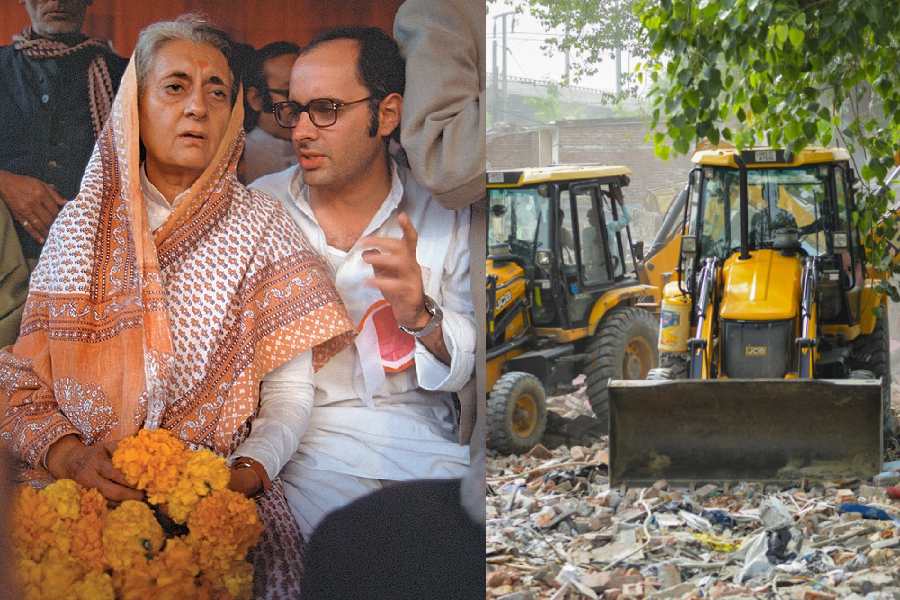 |
| Dokra pieces on display at the Bengal Home Industries. Pictures by Anindya Shankar Ray) |
Gayatri Devi never failed to pick up silks and cottons from here whenever she was visiting Calcutta. Gaganendranath Tagore himself had created a motif exclusively for the use of this store, whose patrons included the likes of Lady Carmichael (its founder member), the Tagore family, the Burdwan royal family, Lady Ranu Mookerjee and Padmaja Naidu.
Today, in the run-up to 100 years of its existence, the Bengal Home Industries is losing customers to glitzy malls and specialised boutiques, though its artefacts and handlooms still cost much less than those in niche stores.
Operating out of the first floor of a rundown building at 11 Camac Street, the store attracts few eyes. But climb up the wooden staircase and a treasure trove awaits you: Bengal handloom, dokra and terracotta curios, wooden and clay figurines, tapestry, linen, silver jewellery, embroidered bags... you name it, they’ve got it.
As a pre-Poila Baisakh attraction, customers can see two wicker basket-makers in action on the store premises. While selecting a pattern for a basket or stool, the globe-trotting Bengali can even pick up a pair of wooden chopsticks from the duo.
The store was originally intended to showcase Bengal craft. But now, other states are represented as well. “The store was established in 1917 with the intention of promoting Bengal crafts and offering a fair price to craftsmen,” said Chitra Palchoudhuri, the joint honorary secretary of Bengal Home Industries Association. “But, changing with the times and giving in to popular demand, we have also started procuring weaves and artefacts from Uttar Pradesh, Tamil Nadu, Kashmir and Rajasthan.”
And while there’s an effort to move with the times, the store is also trying to revive dying-out crafts and rare weaves: khadi muslin, Roshanara silks and cottons, silver filigree work, brass and copper kosha-kushi sets and rice-measure bowls of palm shells and brass.
 |
| A scarf with the motif that Gaganendranath had designed exclusively for the store to use |
It’s not an easy task, said Palchoudhuri. “Most of the second-generation weavers and artisans have shifted to other trades now. We often have to beg them to get back to their original line of work, but we cannot always offer them bulk orders in return,” she added.
Scouring the villages for Roshanara weavers turned out to be quite a challenge. “I reached a village in Midnapore’s Tamluk to hunt down the only weaver left who had the specialised skills. He was already working in a brick kiln and making lungis and gamchhas on the side. He refused to give up his lucrative job and start weaving Roshanara silk again. It took quite a bit of cajoling. Now, he has agreed to teach some other weavers the trade, so that the skill is not lost altogether,” Palchoudhuri recalled.
Similarly, to reach the wicker-mat (madur) makers in Midnapore, she had just a three-hour deadline in the morning. For, the same place where the mat-makers sell their stuff turns into a vegetable market for the rest of the day. “Our wicker-mats are coloured with natural vegetable dye. But then, if there are few takers, our hard work goes to waste. This way, the former staple of Bengali homes will disappear altogether. As it is, we don’t procure mother-of pearl ornaments and curios made of animal horns these days. They were once in great demand here.”
Though the store boasted an elite clientele even a decade ago, their patrons now are mainly old-time customers, NRIs and foreigners. “Since it’s a non-profit organisation, we can afford to keep the prices much lower than elsewhere. That should draw the discerning middle-class too,” Palchoudhury added.










